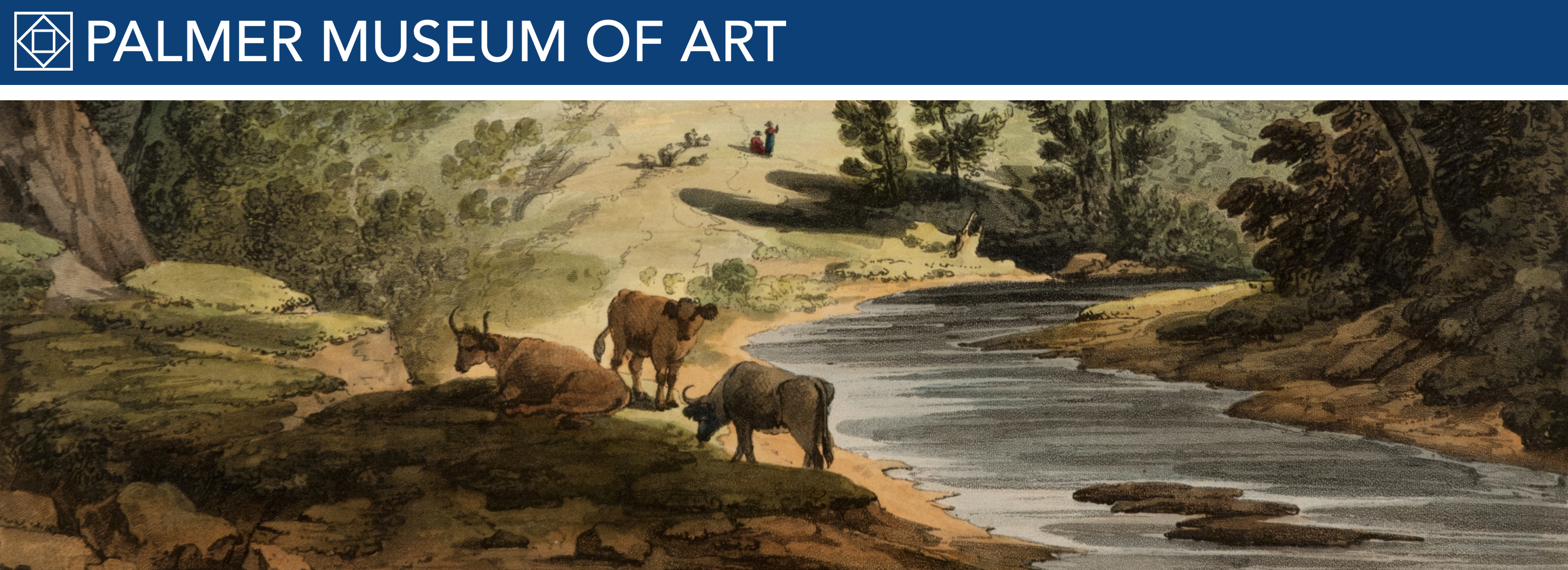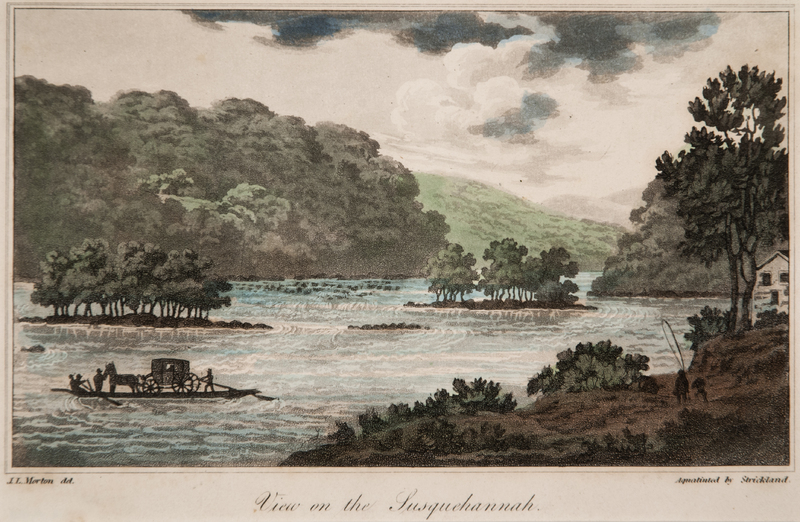Pennsylvania Scenery
William Strickland
American, 1788–1854
After John Ludlow Morton
American, 1792–1871
View on the Susquehannah
Aquatint and etching with hand coloring, 4 3/8 x 7 3/8 inches
Published in the December 1815 issue of The Port Folio (frontispiece)
Partial gift and purchase from John C. O’Connor and Ralph M. Yeager
86.599
A student of architect Benjamin Henry Latrobe, William Strickland is best known for his engineering and architectural work. Among his most notable constructions is the Second Bank of the United States building, still standing in Philadelphia. But earlier in his career he was sought out for his skills as a printmaker. His View on the Susquehannah, after an early and now lost drawing by John Ludlow Morton, answered a call from The Port Folio, a literary and political magazine published in Philadelphia between 1801 and 1827: “It is our intention to devote a plate in each number of The Port Folio to the description of American Scenery. To the pencil our country affords an inexhaustible abundance, which, for picturesque effect, cannot be surpassed in any part of the old world. We invite the artist and the amateur to furnish us with Sketches, and accompanying descriptions” (The Port Folio, February 1809).
The imagery here is sometimes purported to represent Harris’s Ferry, a crossing of the Susquehanna River established by John Harris in 1733. Harris was a trader whose post, built near the critical juncture of the Susquehanna and Juniata Rivers, attracted a settlement that in 1785 became known as Harrisburg. The aquatint, however, does not identify a specific location, and the view may feature any one of the fifteen ferries known to have navigated the lower Susquehanna during the early years of the nineteenth century.

